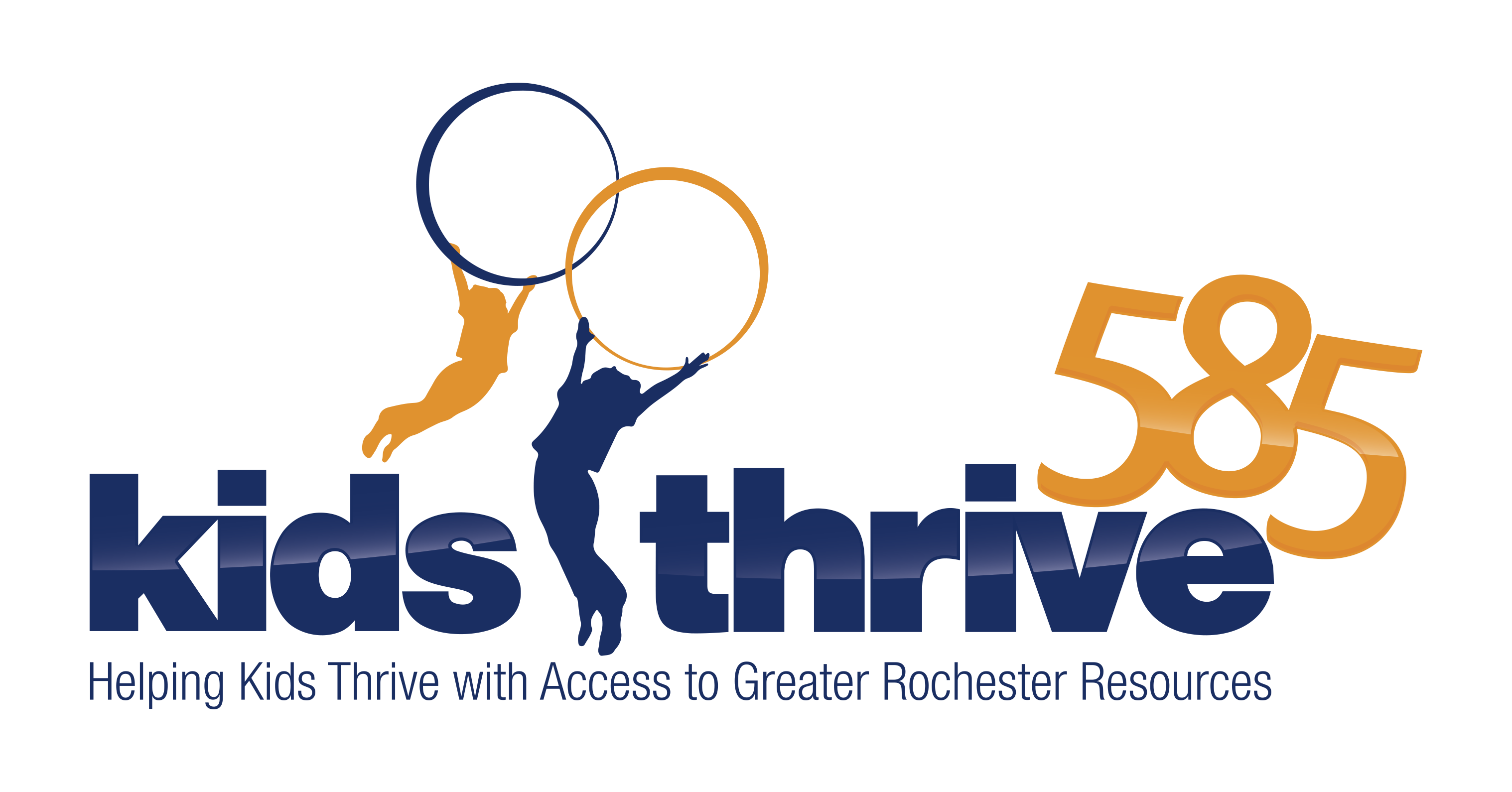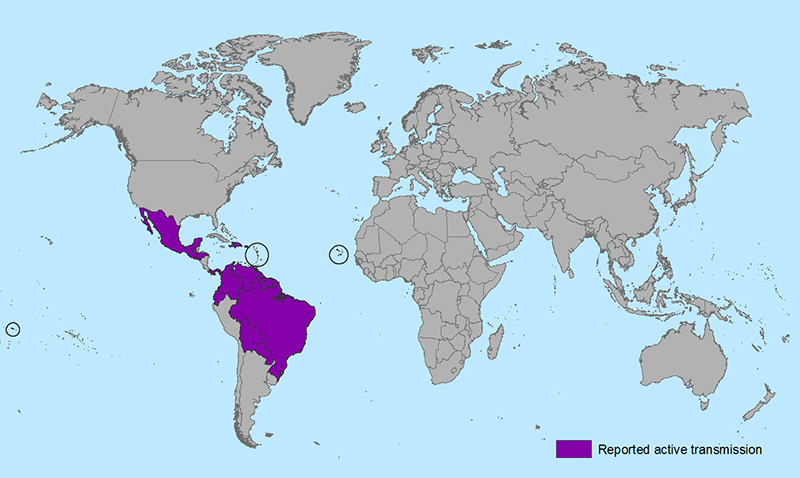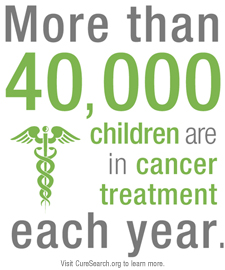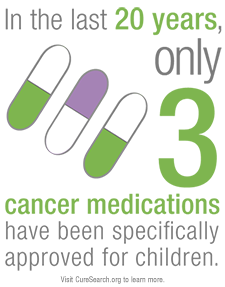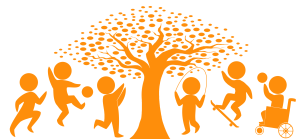Zika Virus
Zika virus is a Flavivirus (like West Nile virus) spread through Aedes mosquito bites. Symptoms of Zika virus disease do not occur in everyone bitten by an infected mosquito. The most common symptoms of infection include: fever, rash, joint pain, and conjunctivitis (red eyes). These symptoms usually last from a few days up to a week and rarely result in hospitalization.
The Pan American Health Organization first released warnings about Zika virus in May 2015 after infections in Brazil led to reports of Guillain-Barré Syndrome and birth defects in infants born to women pregnant at the time they contracted the virus. Many countries in the affected regions have reported an associated significant spike in microcephaly cases in newborns.
In response, CDC has issued a travel alert (Level 2-Practice Enhanced Precautions) for people traveling to regions and certain countries where Zika virus transmission is ongoing.
Countries and Areas Affected by Zika Virus (Jan 2016)
Image from CDC Website: http://www.cdc.gov/zika/geo/index.html
Women who are pregnant, or are trying to become pregnant, and their partners should pay close attention to the most up-to-date travel guidelines from the CDC and even consider avoiding travel to countries listed. Women should consult with their doctor if they do choose to travel to these regions and take precautions to avoid mosquito bites by using repellant with DEET, picaridin or IR3535. In addition, travelers should wear long sleeves and pants, preferably treated with permethrin, and stay in places with air conditioning or window screens.
The CDC recommends that pediatricians consider the possibility of Zika virus in patients who present with those symptoms and recently have traveled to an endemic area. They should report suspected cases to state health departments so diagnostic testing can be performed.
Resources:
Possible Association Between Zika Virus Infection and Microcephaly
CDC activates emergency operations center, expands travel alert
How to Discuss Media and Technology with Children and Teens…
The Center on Media and Child Health at Boston Children’s Hospital has assembled a team of clinicians, undergraduate students, volunteers and researchers whose mission is to “educate and empower children and those who care for them to create and consume media in ways that optimize children’s health and development. [They] seek to understand the positive and negative health impacts media can have and find ways of making media the most positive possible influence in children’s lives.” The team at CMCH has worked since 2003 to to focus on the media’s impact on children in many ways, which led them to assemble tip sheets for parents. These sheets are focused on topics including: media, substance abuse, and sexual behavior and are divided up by age groups.
This group has numerous materials and information sources on their website! We at KT585 were looking for resources to refer our patients and families to, and are happy to know that such an excellent resource already exists. As our friend, Dr. Andy Aligne says, “no need to reinvent the wheel.”
Please check out their website, tip sheets, blog, and information for parents, researchers, clinicians, and educators!
CMCH Main Website: http://cmch.tv/
September is National Childhood Cancer Awareness Month
There are many significant diseases and organizations that are focused on in September. They are all competing for recognition of their important work and, ideally, some additional funding for research to eliminate some serious illnesses. As we take time to draw attention to the work being done to end childhood cancer we would like to pause and recognize some of the other causes that share in this month:
- National Atrial Fibrillation Awareness Month
- National Food Safety Education Month
- Fruit and Veggies-More Matters Month
- Healthy Aging Month
- National ITP Awareness Month
- Blood Cancer Awareness Month
- National Cholesterol Education Month
- Ovarian Cancer Awareness Month
- Prostate Cancer Awareness Month
- National Recovery Month
- National Sickle Cell Month
- Newborn Screening Awareness Month
- World Alzheimer’s Month
- Sepsis Awareness Month
Cancer can make for devastating diagnosis at any age, but when the youngest among us are stricken with this type of news it can make it particularly difficult for everyone involved. Each year over 15,000 children in our country are given cancer diagnoses, with up to a quarter of them eventually losing their battle with cancer. There are many fantastic researchers and organizations throughout our country working toward finding cures for cancer. Take some time to read about and donate to organizations working hard to wipe out childhood cancer!
We are going gold in September to help draw attention to this cause. Join us!
References:
http://www.kidsvcancer.org/facts/
http://curesearch.org/Infographics
http://www.stbaldricks.org/
https://www.stjude.org/
http://www.cancer.gov/
www.cancer.org
August is National Immunization Awareness Month!
 Image from: https://www.nphic.org/niam
Image from: https://www.nphic.org/niam
This year for National Immunization Awareness Month, we are going to discuss the new Advisory Committee on Immunization Practices (ACIP) recommendation to vaccinate against Meningitis Serogroup B, which is not covered by current vaccinations. Meningitis Serogroup A causes approximately 80-85% of meningococcal meningitis cases, and is included in the current quadrivalent vaccine along with serogroups C, W, and Y.
In October 2014 and January 2015, the FDA licensed two different Serogroup B Meningococcal Vaccines. According to the Centers for Disease Control and Prevention, in 2012 about 500 total cases of meningococcal disease were reported in the United States, of which 160 were caused by serogroup B. The new ACIP recommendation encourages vaccination of people aged 10-25 years, specifically those with increased risk of contracting the disease such as those with asplenia, persistent complement deficiencies, those at increased risk of disease contraction due to line of work or an outbreak, and many of those deemed at risk based on previous Meningococcal Vaccine recommendations.
This information may leave you wondering how this effects the current immunization schedule. According to the CDC: “MenB vaccine should be administered as either a 2-dose series of MenB-4C or a 3-dose series of MenB-FHbp. The same vaccine product should be used for all doses. Based on available data and expert opinion, MenB-4C or MenB-FHbp may be administered concomitantly with MenACWY vaccines, but at a different anatomic site, if feasible.”
For more information, speak with your doctor or check the reference links below. This is an excellent advance in our capability to protect against a common cause of morbidity and mortality! Check out the NIAM Toolkits for more helpful information on the importance vaccination throughout our lives!
References:
http://www.immunize.org/acip/acipvax_menin.asp
http://www.cdc.gov/mmwr/preview/mmwrhtml/mm6422a3.htm
http://www.fda.gov/NewsEvents/Newsroom/PressAnnouncements/ucm420998.htm
http://www.fda.gov/newsevents/newsroom/pressannouncements/ucm431370.htm
https://www.nphic.org
July is UV Safety Month!
July in Rochester, New York brings a vast array of outdoor activities. The fabulous outdoor activities make for ample opportunity to focus on protecting our skin from potentially harmful UV rays. The skin is the largest organ in the human body and provides constant protection from the elements year round.
Skin cancer is the most common cancer in the U.S. with an estimated 68,000 new cases per year. UV rays are a major cause of skin cancer. Fortunately, there is something that can be easily done to help minimize the effects of sun exposure on the skin.
Prevention is the key in fight against the power of UV rays and their ability to cause skin cancer. WIth a few easy steps you can stop UV rays in their tracks!
- Avoid sun exposure during peak hours of 10 am – 4 pm.
- If you must be outside during peak hours, try to spend plenty of time in the shade and wear long, loose clothing. Also protect your head and eyes with hats and sunglasses to keep harmful rays away!
- Apply at least one ounce (two tablespoons) of sunscreen 30m minutes prior to going outdoors and then reapply every two hours thereafter.
- An SPF of 15 or higher is recommended
Sunscreen may be applied to anyone older than six months of age. Newborns should be kept out of direct sunlight to prevent unnecessary exposure to UV rays before they are old enough to be protected by sunscreen.
The federal government tracks UV light intensity. You can look into our local levels through the Environmental Protection Agency’s (EPA) UV index. This index measures the daily intensity of UV rays from the sun on a scale of 1 to 11. A low UV index requires minimal protection, whereas a high UV index requires maximum protection.
With these tools and increased awareness, we can have a healthy, happy summer enjoying the outdoors in our great area!
Resources:
https://foh.psc.gov/calendar/july.html
http://www.healthnews.com/en/news/July-is-UV-Safety-Month/2sf2LWpqX1ShervpTuQQy_/
https://www.cancer.org/cancer/types/skin-cancer.html
It’s National Poison Prevention Week!
National Poison Prevention Week is March 15-21st. The Poison Prevention Week Council website has lots of information about keeping homes and businesses safe for children. Check out their tips to prevent poisoning here.
Lead Poisoning
One type of poison that may be hiding in homes is lead. Historically, lead was mainly found in gasoline and paint. Thanks to lead laws, gasoline is now unleaded and homes built after 1978 do not contain lead paint. However, in homes built before 1978, paint chips and dust likely still contain lead and care needs to be taken to remove this health threat. Other sources of lead today include imported cosmetics, food and spices, ceramic pottery, and toys. Because most of these sources are brought into the US from other countries, refugees, immigrant families, and adopted children are at particular risk of lead poisoning.
Why is lead poisoning so important?
Even at very low levels, lead can cause harm to young children’s developing brains. Symptoms of lead poisoning include irritability, loss of appetite, and learning problems, but these symptoms may not be seen until levels are higher.
While the lead can be removed using chelation therapy to prevent further harm to the child, the damage already done by the lead cannot be fixed.
So, the best thing to do is prevent lead poisoning:
- Make sure children are tested for lead poisoning at 1 and 2 years old with a blood test scheduled by their health care provider. Some health care providers also test at 18 months old.
- If you are concerned that your child has been exposed to lead, tell your child’s health care provider so that they may be tested for lead poisoning again.
- Make sure your child’s diet includes sources of iron, calcium, zinc, and vitamins C, D, and E.
- Rental properties in the City of Rochester are required by ordinance to be inspected for deteriorated paint, both on the interior and exterior of the rental unit. The deteriorated paint is required to have a protective covering and must be repaired using Lead Safe Work Practices.
- If you are renovating an older home, remember to follow these lead safety tips.
- Check out these resources for more information on what local and state organizations are doing to end lead poisoning in Rochester.
- Let’s Make Lead History
- Western New York Lead Poisoning Resource Center
- Monroe County Department of Health (Educational Material available in multiple languages.
- NY State Department of Health (Educational Materials available in several languages.)
Trending Topic Contributor: Kimberly Worcester
March is National Nutrition Month®
National Nutrition Month® is dedicated to promoting healthy eating habits and regular physical activity. In Monroe County, 17.6% of children and adolescents are obese1, and 19% of children Monroe County struggle with hunger and food insecurity.2 Many resources are available in Rochester to help children eat nutritious meals.
MyPlate is a national campaign that offers a number of online resources that teachers, health care providers, and families can use to educate children on nutritious eating and physical activity. These resources are available in English and Spanish. MyPlate Kids’ Place features games, activity sheets and other kid-friendly resources. There are also lesson plans available for kids of all ages.
For people who want to eat healthier but are having trouble finding or affording nutritious food in Rochester, there are resources to help.
Foodlink provides a number of options to get healthy food in the Rochester community. Foodlink helped redesign the Stop One Meat Market, located at 352 Jay Street, so that you can now purchase fresh fruits and vegetables at this corner store. The store also now takes WIC and SNAP. T&K Deli and Minimart at 479 Carter Street will be finished with the same redesign this spring.
The Curbside Market is Foodlink’s “farmstand on wheels” and this 18-foot truck that brings farm fresh produce to the city is available during summer and fall months, and new this year, is also available during winter months with a revised schedule. You can access the winter schedule here. The Curbside Market accepts cash, debit, WIC, and SNAP.
If you are looking for education on how to access and cook healthy and affordable food, Foodlink also offers cooking classes through its Cooking Matters™ class and Cooking Matters at the Store, which is an interactive grocery store tour that teaches families how to shop for healthy, affordable food. Upcoming class information can be found by clicking this link.
Thousands of children in the Rochester City School District and Monroe County receive reduced cost meals during the school year, but on weekends and summer days, this is not an option. Foodlink’s BackPack Program™ provides children in need with bags of nutritious food that they can discreetly take home for those weekends and holidays off from school. During the summer months, The City of Rochester partners with Foodlink to sponsor free, fresh meals for kids with the Rochester Summer Meals Program.
Check out Foodlink’s 31 Days of Recipes in celebration of National Nutrition Month®. The meals are easy to make, affordable and nutritious!
For those who use Twitter, the Academy of Nutrition and Dietetics (the group who started National Nutrition Month!) is hosting weekly Twitter chats every Wednesday at 1 pm during the month of March. Just follow @eatright and use #NNMchat to participate.
Don’t Forget to Be a Healthy Hero
Eat 5 servings of fruits and vegetables
Spend no more than 2 hours watching TV, playing video games or surfing the net
Get at least 1 hour of heart-pumping active play
Drink 0 sugar-sweetened beverages
References:
- Community Health Assessment and Community Health Improvement Plan (2013): 1-47. Monroe County.gov. Monroe County Department of Health, Nov. 2013. Web. 9 Mar. 2015. <http://www2.monroecounty.gov/files/health/DataReports/Monroe%20County%20cha%20chip%202013.pdf>.
- “Map the Meal Gap.” Feeding America. 2015. Web. 10 Mar. 2015. <http://www.feedingamerica.org/hunger-in-america/our-research/map-the-meal-gap/?_ga=1.212801556.1878355846.1426008954>.
Trending Topic Contributor: Kimberly Worcester
HPV
First introduced in 2006, the HPV vaccine was a game changer in the field of preventative medicine and has already proven to reduce rates of cervical cancer. Last year, the CDC announced that the rate of HPV infection among teenage girls decreased from 11.5% to 5.1% after the widespread institution of the HPV vaccine, a drop of 56% (1). In 2011, it was estimated that 40.4% of females aged 13-17 here in Monroe County were immunized for HPV (2). Recently, however, both locally and nationally, HPV vaccination numbers have stalled, depriving thousands of children proven cancer prevention. So what is HPV, how does it cause cancer, and why is the vaccine effective?
- The human papilloma virus (HPV) is a group of 150 similar viruses. A majority of the viruses cause non-harmful skin warts (e.g. arms, hands, feet). A few specific HPV types are scientifically known to cause harm. HPV 6 and 11 are the viruses responsible for 90% genital warts and HPV 16 and 18 are the HPV viruses responsible for 70% of cervical cancer.
- HPV is extremely common and is generally passed from person to personal through sexual contact. Almost all sexually active men and women will be affected at some point in their lives. About 14 million Americans become newly infected every year (3). A majority of these HPV infections do not have symptoms and go away on their own, but some can persist and cause disease.
- Developed right here in Rochester, NY at the University of Rochester, one of the HPV vaccines, known commercially Gardasil®, protects specifically against HPV 6,11,16,18 and thus is preventative against genital warts and HPV related cancers (including cervical cancer and oral cancer.) Cervarix® is the other FDA approved HPV vaccine although it does not cover HPV 6 and 11.
- All children, ages 10-12, should get the vaccine. Early vaccination is recommended because the vaccine is generally more effective if given before the onset of sexual activity. Boys should get the vaccine as well to decrease their risk of oral cancer and to limit spread of the virus to future partners. Even after sexual contact, vaccination is recommended as exposure to different HPV types continues throughout life. Women can be vaccinated up to age 26 and men up to age 21 (3). Pregnant women should not be vaccinated.
- The vaccine is given in three parts over the course of six months. The most common side effects involved with vaccination include arm pain and redness after the shot, with possible fever. Brief fainting spells have also occurred but these are very rare.
- The vaccine works extremely well and clinical trials have shown close to 100% protection against the aforementioned HPV types (3).
- All private insurance plans under NYS regulation are required to pay for the HPV vaccine through the age of 18. Please contact your insurance company with further questions. If you or your child is uninsured or underinsured, there is a federal program called Vaccines for Children which can help pay for all types of vaccines, including HPV. Additionally, both Merck (1-800-293-3881) and GlaxoSmithKline (1-877-822-2911) have assistance programs for those individuals who cannot afford the vaccine or are between the ages of 19-26 (4).
Please talk to your medical provider if you have any questions regarding HPV and the HPV vaccine.
Healthcare professionals: You are the key to cancer prevention. Please watch this short clip from the CDC.
- http://www.cdc.gov/media/releases/2013/p0619-hpv-vaccinations.html
- http://www.health.ny.gov/prevention/prevention_agenda/2013-2017/indicators/2013/p31.htm
- http://www.cdc.gov/vaccines/vpd-vac/hpv/vac-faqs.htm
- http://www.cdc.gov/vaccines/programs/vfc/parents/qa-detailed.html
Ebola Virus
It has been over a month since the first case of Ebola in the United States and news of the virus continues to dominate the headlines. Altogether, there have been three reported cases in the United States with 177 others testing negative after surveillance (1). With news and social media at our fingertips, children have an increased risk of coming across frightening information they may not fully understand. In an effort to provide full disclosure, here are some facts you may share with them:
- Ebola is a virus who’s natural reservoir is believed to be bats. Transition from natural reservoirs to humans is quite rare, but usually occurs when an individual has been handling deceased gorillas or chimpanzees. The first outbreak of the disease was described in Zaire (now the Congo) in 1976 (2).
- Despite the worsening outbreaks in Africa, Ebola is remarkably difficult to transmit person to person. Unlike the common flu, Ebola cannot be transmitted through the air. Direct contact with the bodily secretions of a person (either through open wounds, mucous membranes, or needle sticks) with active disease is the only means of transmission (3). The virus cannot be transmitted through the air, water, food, or simple hand-to-hand contact.
- Symptoms typically surface 2-21 days after exposure. Ebola initially presents with fever or severe headache with muscle weakness, diarrhea, and vomiting. Unexplained bleeding or skin bruising is also common. A person cannot infect others until they have symptoms themselves (3).
- The Ebola virus is very susceptible to simple hygiene, including washing with soap and water, heat, disinfectants, or hand sanitizer. Frequent washing or sanitizing of hands is always a good idea and should now be encouraged even more, not only for Ebola precaution, but also as flu season has begun. It is far more likely to contract the common flu rather than Ebola even though the symptoms are somewhat similar at the onset.
If your children are worried or have questions regarding the disease, the American Academy of Pediatrics suggests it is best to remind them they are safe and the disease is incredibly rare (4). It may calm them to know that there are very smart people working hard to prevent and cure the illness.
If you have any further questions regarding Ebola, there is plenty of information on the website for the Center for Disease Control (1).
- http://www.cdc.gov/vhf/ebola/index.html
- Pattyn, S.; Jacob, W.; van der Groen, G.; Piot, P.; Courteille, G. (1977). “Isolation of Marburg-like virus from a case of haemorrhagic fever in Zaire”. Lancet 309 (8011): 573–4.
- http://www.cdc.gov/vhf/ebola/symptoms/index.html
- http://www.healthychildren.org/English/health-issues/conditions/infections/Pages/Ebola.aspx
Whipping Childhood Cancer Challenge
In honor of National Childhood Cancer Awareness Month (September), countless people around the country are having pies thrown in their faces! Why? To call attention to the frequency of childhood cancer diagnoses! Every day 46 children are diagnosed with cancer and 7 children lose their life to cancer. Cancer is the leading cause of death by disease in children and adolescents in the United States. 1 in 285 children will be diagnosed with cancer by the age of 18. Childhood cancer does not discriminate, sparing no ethnic group, class or geographic region. The average age of death for a child with cancer is 8, causing a child to lose 69 years of expected life. The “Whipping Childhood Cancer” movement is working to bring awareness to this all too common childhood disease. Through the help of whipped cream, hashtags, and viral videos they are hoping to both shed light on childhood cancer and raise money for cancer research. Check out some of the medical staff at Golisano Children’s Hospital at UR Medicine getting in on the fun!
Cancer Nurses and Doctors at UR Medicine get WHIPPED!
Rochester Summer Meals Program
Thousands of children in Rochester participate in reduced cost meal programs during the school year. The summer time may be filled with fun in the sun, but the gap in reduced cost meals is disrupting for many families. The City of Rochester in collaboration with Foodlink is sponsoring free, fresh meals for kids with the Rochester Summer Meals Program this summer. Kids aged 18 years and younger can visit of the many Summer Meals locations for a free breakfast, lunch and snack. For additional information, call 2-1-1. Most sites are serving from June 30 to August 15 (excluding July 4). Sites include community agencies, schools, churches and the R-Centers.
Affordable Care Act
Providing health insurance coverage to children is vital to allowing them to grow and thrive! It allows them access to a primary care physician and the ability to establish a relationship with care providers that can last a lifetime! Children who are closely followed by a Pediatrician will miss fewer days of school due to illness. Children who have a strong relationship with a Pediatrician will have fewer Emergency Department visits because they have the controller medications they need in addition to antibiotics wen appropriate!
Did you know that you can still sign up for insurance coverage under the affordable care act through New York State’s insurance marketplace that will go into effect March 1st?
We at Kids Thrive 585 strongly encourage everyone to seek health care coverage for themselves and their children! Please see our updated Health Insurance Resources page for more information!
Vaccine Education
The Vaccine Education Center is a member of the World Health Organization’s (WHO) Vaccine Safety Net because the website meets the criteria for credibility and content as defined by the Global Advisory Committee on Vaccine Safety.
The Vaccine Education Center at The Children’s Hospital of Philadelphia was launched in October 2000 to provide accurate, comprehensive and up-to-date information about vaccines and the diseases they prevent to parents and healthcare professionals.
The Center, through its Web sites, videos, informational tear sheets, e-newsletters, webinars and speakers programs, seeks to dispel some of the common misconceptions and misinformation surrounding vaccines. The goal is to communicate the facts about each vaccine as well as how vaccines are made, how and why vaccines work, who recommends them, whether they are safe, whether they are still necessary, and when they should be given.
The Vaccine Education Center is funded by The Children’s Hospital of Philadelphia. The Center does not receive support from vaccine manufacturers.
Vaccines have literally transformed the landscape of medicine over the course of the 20th century. Before vaccines, parents in the United States could expect that every year:
- Polio would paralyze 10,000 children.
- Rubella (German measles) would cause birth defects and mental retardation in as many as 20,000 newborns.
- Measles would infect about 4 million children, killing about 500.
- Diphtheria would be one of the most common causes of death in school-aged children.
- A bacterium called Haemophilus influenzae type b (Hib) would cause meningitis in 15,000 children, leaving many with permanent brain damage.
- Pertussis (whooping cough) would kill thousands of infants.
- Vaccines have reduced and, in some cases, eliminated many diseases that killed or severely disabled people just a few generations before. For most Americans today, vaccines are a routine part of healthcare.
However, the disappearance of many childhood diseases has led some parents to question whether vaccines are still necessary. Further, a growing number of parents are concerned that vaccines may actually cause autism, hyperactivity, developmental delay, attention deficit disorder, diabetes, multiple sclerosis, and sudden infant death syndrome (SIDS) among others. These concerns have caused some parents to delay vaccines or withhold them altogether from their children.
Information above from Vaccine Education Website as review by Paul A. Offit, MD in March 2013.August is National Immunization Awareness Month
Immunizations have helped children stay healthy for more than 50 years. They are safe and they work. In fact, serious side effects are no more common than those from other types of medication. Vaccinations have reduced the number of infections from vaccine-preventable diseases by more than 90%! Yet many parents still question their safety because of misinformation they’ve received. That’s why it’s important to turn to a reliable and trusted source, including your child’s doctor for information.
For more information on vaccination schedules for the entire family, please visit the American Academy of Peditrics (AAP) website HealthyChildren.org for an up to date summary of recommended immunizations!
